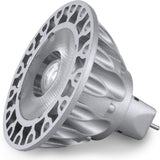How To Make Sure Outdoor Lights Survive the Winter
Posted by Nick on for ProLampSales

If you are anywhere close to the Midwest or Northeast parts of the United States, you've probably had more than your fill of winter. You may even start shivering just at the mention of the phrase "polar vortex." With one of the most brutal winters finally behind us, it's time to assess any damage to your outdoor lighting system and either replace or readjust wires, bulbs, and fixtures.
We all know how badly snow, ice, and wind chills can affect our skin and energy bills, but they can be just as bad for your outdoor lighting system. Even if you took down all the Christmas and holiday lights by New Year's, you may have landscape lighting around your house that has been buried in snow for several months. With the snow gone, it's time to give your lights a check-up.
Check Out the Landscape Lighting System
The main issue to look out for is any shifting of light fixtures that took place due to high winds or being buried under three feet of snow for a month-and-a-half. Reposition them or call a specialist for assistance to put them back in their proper position for lighting your house, path, pond, or patio. In fact, if you don't know what you're doing with any of the tips in this article, call a landscaping or electrical specialist, especially in dealing with wiring.
Another consideration is checking any bulbs that are no longer working. While some bulbs may have just come loose from all of the wind and snow, others will need to be replaced completely. Low voltage bi-pin halogen bulbs are very common in landscape lighting applications. If you discover that some of these appear burned out, it may be that they simply need to be re-set in the socket. Use gloves or a cloth to grasp the bulb (oil on the skin will reduce bulb life), pull the bulb all the way out of the socket, then push back in. If the bulb still does not illuminate, replace it.
Compact fluorescent bulbs are notorious for performance issues in cold weather, so it may also be that the bulbs are simply too cold to start. CFLs have a minimum start temperature, below which they may struggle to turn on or light up quickly. On the other hand, LEDs bulbs thrive in colder temperatures.
Finally, check for any wires that might have been pushed above ground due to freezing and thawing cycles during the winter season.
Prepare for Summer Lighting Issues
While you're doing your spring checkup for your outdoor lighting, also consider some improvements. If you're having a rainy spring, expect bugs to make their return as soon as they can start breeding! Consider adding a bug light bulb or two to any areas such as decks, patios and porches). Bug lights can help keep insects away without killing the beneficial bugs that you want around your house -- just not in your face.
Also, if you are using LED bulbs in outdoor fixtures, consider proper heat management for summer months. Heat can severely compromise LED life, so proper ventilation is important.
- Posted in Landscape & Outdoor
Featured Products (View All)
0 Comments




